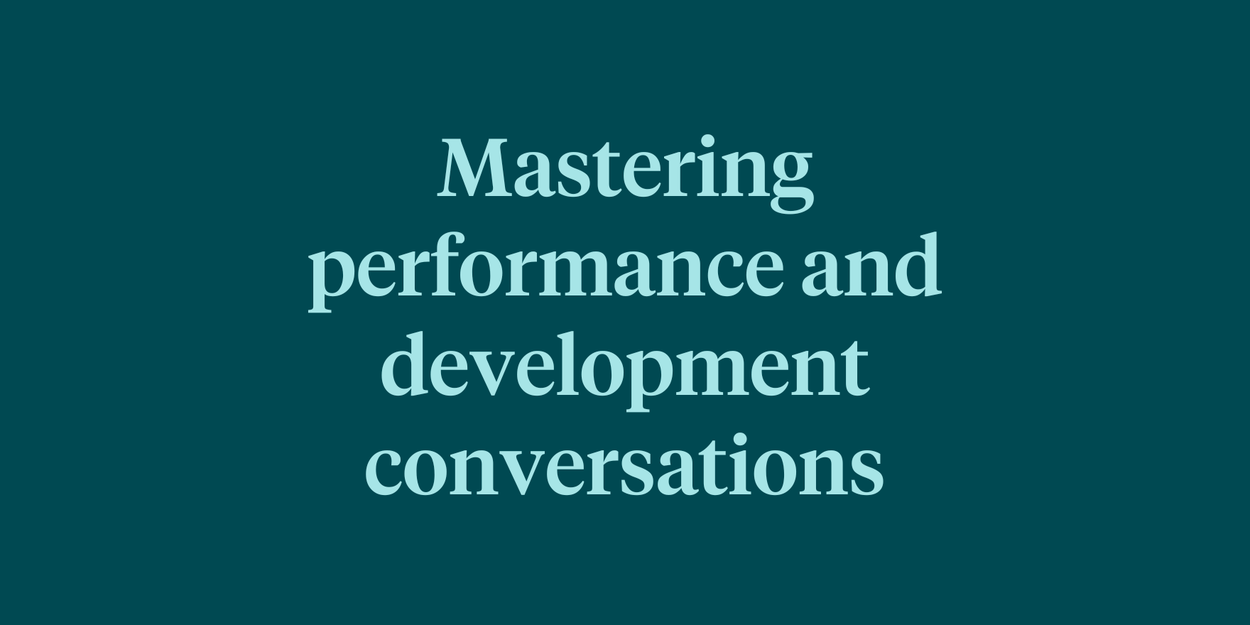
Mastering performance and compensation conversations

There are a lot of moving parts in a typical performance and compensation cycle.
You need to figure out how to talk to employees about their performance and how to effectively communicate results. You have to support your managers in facilitating smooth performance conversations. You need to get your leadership team on board with the process and next steps (especially when it comes to the budget).
It can be tough to figure out how to get all of those things done, let alone how they fit together.
Fortunately, that’s exactly what we discussed in a recent webinar. Chanai Vaznonis, Lead People Scientist here at Culture Amp, and Dana Paul, People Operations Lead at Pave, a data-driven compensation platform, answered questions about how performance and compensation connect – and how to make that relationship clear to employees.
Should you run performance and compensation cycles together or separately?
Inevitably, this is one of the biggest questions that people leaders face. Is it better for performance discussions to coincide with compensation conversations? Or to separate the two?
There isn’t one “right” answer here. Both approaches have pros and cons. Separating them gives employees more space to focus on the development aspects of the conversation, but it can also make the process less clear.
Ultimately, the best approach is the one that’s customized to your company. “It’s really something that should align with your company’s own performance and compensation philosophy,” Dana explains, noting that Pave is a performance-based organization, so they combine performance and compensation into a single conversation.
As you think about what makes the most sense for your organization, Chanai shares that it can be helpful to step into your employees’ shoes. When employees think about compensation, they draw three comparisons:
- How do I compare to other employees at my organization?
- How do I compare to others outside of the organization?
- Am I progressing within the organization, or am I stagnant?
Thinking through each of those gives you a better understanding of what employees bring into your compensation and performance discussions. “If you take away things like money or status, employees might then be able to hear the performance and development aspects of the conversation,” she adds.
That’s not to say you have to run those discussions separately. Rather, consider all of the aspects, choose the route that suits your organization best, and then communicate that thought process to both managers and employees. Dana emphasized the importance of explaining upfront how performance and compensation interact.
How can you effectively tie performance ratings into your compensation review cycle?
Even if you decide to talk about performance and compensation separately, understand that these processes are inherently connected. “Performance ratings are often a piece of the way compensation decisions are made,” Chanai says.
Drawing those parallels for employees requires that you’re intentional and communicative. That starts with ensuring employees understand your actual performance ratings – what they measure and why they’re designed the way they are.
And while Chanai explains that ratings “provide advantages for quantifying, tracking performance, and helping to mitigate biases,” it’s important to keep the focus on performance and not the person. “So things like saying ‘consistently meets expectations’ versus ‘valued performer,’” she adds. “Putting [focus] more on the behavior than the actual individual.”
How can you boost employee perceptions of the performance and compensation process?
Something called organizational justice comes into play here, particularly when employees think about the fairness of compensation, promotions, and performance. Organizational justice has three main components:
- Distributive justice: Perceptions of fairness in outcomes or decisions
- Procedural justice: Perceptions of fairness in the process that determines the outcomes
- Interactional justice: Perceptions of fairness around the treatment of people when you communicate those outcomes
Put simply, for employees to feel that performance and compensation decisions are fair, they need to understand how they work. This is an area where a lot of organizations fall short.
In a recent Culture Amp analysis of employee experience trends, the statement “I understand how pay and promotion decisions are made” was one of the lowest items of agreement. To change this, companies must do a better job of prioritizing transparency with employees.
That’s something Pave has focused on. “One thing that we’ve done at Pave that we’ve seen work really well and resonate with our employees is peeling back as much as possible on our own process and approach,” says Dana. “You can build a lot of trust along the way in explaining that.”
How do you effectively communicate compensation changes to employees?
When it comes to performance and compensation, making decisions is only the start – managers then need to communicate any changes to their employees. That can feel intimidating, particularly if there isn’t good news to share.
Dana mentions that “investing in those conversations throughout the year can really go a long way,” rather than reserving those topics for one specific time of the year. “I don’t want my team to be surprised by anything coming out of that conversation,” she adds.
Be transparent about the decision-making process behind any compensation changes, and share the information more than once. “There’s no harm in repeating yourself over and over again,” Dana explains. “And you can also spread that across different sources of information.” For example, you could explain the context for your performance and compensation decisions in your weekly all-hands meeting and also in an information hub for employees.
Finally, your employees aren’t the only ones who need support to make the most of these conversations – managers do, too. Providing a simple script can help them “feel as prepared as possible going into these conversations,” Dana shares, especially if they need to communicate a more sensitive topic like tight budgets.
How important is compensation for motivation?
Knowing what to say in a compensation meeting would be easy if you always had good news to share (like “Everybody gets a hefty pay bump!”). However, that’s not always the case.
Fortunately, while pay matters, its impact on employee motivation might surprise you. One of the items in a Culture Amp engagement survey asks employees to rate their agreement with this statement: “[Company] motivates me to go beyond what I would in a similar role elsewhere.”
In looking at the top drivers of agreement with that statement, pay didn’t even factor in. The top five drivers are:
- Employees believe that they’re at a company that will contribute to their development
- Leaders have communicated a motivating vision
- Leaders demonstrate that people are important
- Leaders act on new or promising ideas
- Day-to-day decisions demonstrate that quality and improvement are top priorities
So where does pay come in? Compensation ranked 59th out of 206 benchmarks in terms of top motivators. That’s good news for employers, particularly in times of tighter budgets and fewer resources. “You have more space to innovate, be creative, and understand how you can bring other aspects of total rewards into these conversations,” Chanai explains.
How can managers deal with a performance or compensation conversation that doesn’t go well?
In an ideal world, compensation conversations would always be seamless. But sometimes, these discussions don’t go well. If and when these meetings run off the rails, how can managers course-correct?
Ensure that employees have visibility into the process and understand how decisions are made. “As much transparency as is appropriate can sometimes help with a disconnect that might be happening for the employee,” Dana says.
Managers also need to demonstrate understanding to employees who might feel frustrated, without undermining the organization’s processes. “I think it’s really important to give space to your employees if they are challenging the performance rating or compensation outcome,” Dana continues. “But also, as a manager, to have confidence in the programs and in the way that the decisions were made – to be able to reinforce how you arrived at those decisions.”
Connecting the dots between pay and performance
“When we think about how the two are tied together, performance ratings and compensation reviews are integrated,” Chanai concludes. Even if your organization chooses to address them separately, your employees will likely connect the dots themselves.
For that reason, it’s less about the actual process and more about how you communicate the process to your managers and your employees. Get that part right, and you can pave the way for smoother, more productive conversations for everybody involved.





